This is an old revision of this page, as edited by 71.54.120.152 (talk) at 15:31, 19 September 2013 (→Inside the house). The present address (URL) is a permanent link to this revision, which may differ significantly from the current revision.
Revision as of 15:31, 19 September 2013 by 71.54.120.152 (talk) (→Inside the house)(diff) ← Previous revision | Latest revision (diff) | Newer revision → (diff)
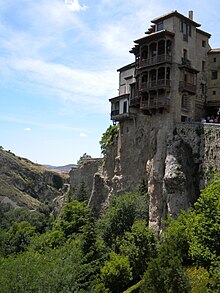
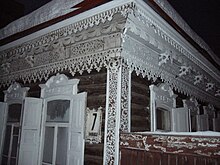
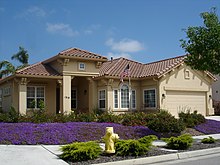
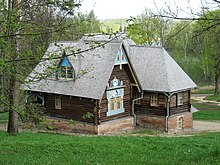
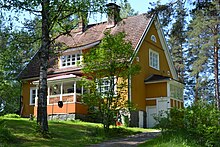
A house is a home, building, or structure that functions as a habitat for humans or other creatures. The term house includes many kinds of dwellings ranging from rudimentary huts of nomadic tribes to complex structures composed of many systems. English-speaking people generally call any building they routinely occupy "home".
The social unit that lives in a house is known as a household. Most commonly, a household is a family unit of some kind, although households may also be other social groups or individuals.
Construction

In the United States, modern house-construction techniques include light-frame construction (in areas with access to supplies of wood) and adobe or sometimes rammed-earth construction (in arid regions with scarce wood-resources). Some areas use brick almost exclusively, and quarried stone has long provided walling. To some extent, aluminum and steel have displaced some traditional building materials. Increasingly popular alternative construction materials include insulating concrete forms (foam forms filled with concrete), structural insulated panels (foam panels faced with oriented strand board or fiber cement), and light-gauge steel framing and heavy-gauge steel framing.
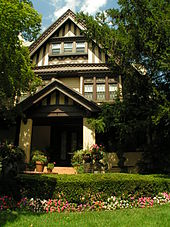
More generally, people often build houses out of the nearest available material, and often tradition and/or culture govern construction-materials, so whole towns, areas, counties or even states/countries may be built out of one main type of material. For example, a large fraction of American houses use wood, while most British and many European houses utilize stone or brick.
In the 1900s (decade), some house designers started using prefabrication. Sears, Roebuck & Co. first marketed their Sears Catalog Homes to the general public in 1908. Prefab techniques became popular after World War II. First small inside rooms framing, then later, whole walls were prefabricated and carried to the construction site. The original impetus was to use the labor force inside a shelter during inclement weather. More recently builders have begun to collaborate with structural engineers who use computers and finite element analysis to design prefabricated steel-framed homes with known resistance to high wind-loads and seismic forces. These newer products provide labor savings, more consistent quality, and possibly accelerated construction processes.
Lesser-used construction methods have gained (or regained) popularity in recent years. Though not in wide use, these methods frequently appeal to homeowners who may become actively involved in the construction process. They include:
- Cannabrick construction
- Cordwood construction
- Geodesic domes
- Straw-bale construction
- Wattle and daub
- Timber framing
- Framing (construction)

Energy efficiency
In the developed world, energy-conservation has grown in importance in house-design. Housing produces a major proportion of carbon emissions (30% of the total in the UK, for example).
Development of a number of low-energy building types and techniques continues. They include the zero-energy house, the passive solar house, the autonomous buildings, the superinsulated and houses built to the Passivhaus standard.
Earthquake protection
One tool of earthquake engineering is base isolation which is increasingly used for earthquake protection. Base isolation is a collection of structural elements of a building that should substantially decouple it from the shaking ground thus protecting the building's integrity and enhancing its seismic performance. This technology, which is a kind of seismic vibration control, can be applied both to a newly designed building and to seismic upgrading of existing structures.
Normally, excavations are made around the building and the building is separated from the foundations. Steel or reinforced concrete beams replace the connections to the foundations, while under these, the isolating pads, or base isolators, replace the material removed. While the base isolation tends to restrict transmission of the ground motion to the building, it also keeps the building positioned properly over the foundation. Careful attention to detail is required where the building interfaces with the ground, especially at entrances, stairways and ramps, to ensure sufficient relative motion of those structural elements.
Found materials
In many parts of the world, houses are constructed using scavenged materials. In Manila's Payatas neighborhood, slum houses are often made of material sourced from a nearby garbage dump.
In Dakar it is not uncommon to see houses made of recycled materials standing atop a mixture of garbage and sand which serves as a foundation. The garbage-sand mixture is also used to protect the house from flooding.
Legal issues
Buildings with historical importance have restrictions.
United Kingdom
New houses in the UK are not covered by the Sale of Goods Act. When purchasing a new house the buyer has less legal protection than when buying a new car. New houses in the UK may be covered by a NHBC guarantee but some people feel that it would be more useful to put new houses on the same legal footing as other products.
United States and Canada
In the US and Canada, many new houses are built in housing tracts, which provide homeowners a sense of "belonging" and the feeling they have "made the best use" of their money. However, these houses are sometimes built as cheaply and quickly as possible by large builders seeking to maximize profits. Many environmental health issues may be ignored or minimized in the construction of these structures. In one case in Benicia, California, a housing tract was built over an old landfill. Home buyers were never told, and only found out when some began having reactions to high levels of lead and chromium.
Identifying houses
With the growth of dense settlement, humans designed ways of identifying houses and/or parcels of land. Individual houses sometimes acquire proper names; and those names may acquire in their turn considerable emotional connotations: see for example the house of Howards End or the castle of Brideshead Revisited. A more systematic and general approach to identifying houses may use various methods of house numbering.
Animal houses
Humans often build "houses" for domestic or wild animals, often resembling smaller versions of human domiciles. Familiar animal houses built by humans include bird-houses, hen-houses/chicken-coops and doghouses (kennels); while housed agricultural animals more often live in barns and stables. However, human interest in building houses for animals does not stop at the domestic pet. People build bat-houses, nesting-sites for wild ducks and other birds, bee houses, giraffe houses, kangaroo houses, worm houses, hermit crab houses, as well as shelters for many other animals.


Houses and symbolism
Houses may express the circumstances or opinions of their builders or their inhabitants. Thus a vast and elaborate house may serve as a sign of conspicuous wealth, whereas a low-profile house built of recycled materials may indicate support of energy conservation.
Houses of particular historical significance (former residences of the famous, for example, or even just very old houses) may gain a protected status in town planning as examples of built heritage and/or of street scape. Commemorative plaques may mark such structures.
Home ownership provides a common measure of prosperity in economics. Contrast the importance of house-destruction, tent dwelling and house rebuilding in the wake of many natural disasters.
Peter Olshavsky's "House for the Dance of Death" provides a 'pataphysical variation on the house.
See also
- Building
- Functions
- Types
- Summer house
- Boarding house
- Tiny house
- Earth sheltering
- Home automation
- Housing estate
- Housing in Japan
- Hurricane-proof house
- Lodging
- Lustron house
- Mobile home
- Modular home
- Lists
- List of American houses
- List of house styles
- List of house types
- List of human habitation forms
- List of real estate topics
- Open-air museum
- Economics
- Miscellaneous
- Institutions
References
- Shelter By Lloyd Kahn. Shelter Publications, Inc., May 1, 2000.
- American Shelter: An Illustrated Encyclopedia of the American Home By Les Walker. Overlook Press, July 1, 1998
- Schoenauer, Norbert (2000). 6,000 Years of Housing (rev. ed.) (New York: W.W. Norton & Company).
- "housing papers" (PDF). clerk.house.gov. Retrieved 18 December 2012.
- "National Register of Historic Places" (PDF). Retrieved 2012-01-04.
- "Energy Performance Certificates - what they are : Directgov - Home and community". Direct.gov.uk. Retrieved 2012-01-04.
- neesit (2007-04-27). "YouTube – Testing of a New Line of Seismic Base Isolators". Youtube.com. Retrieved 2012-01-04.
- James M. Kelly, Professor Emeritus Civil and Environmental Engineering. "Base Isolation: Origins and Development". National Information Service for Earthquake Engineering, University of California, Berkeley.
- Brown, Andy (2009). "Below the poverty line: living on a garbage dump". Real Lives. UNICEF. Retrieved July 12, 2013.
Slum houses, often made of materials scavenged from the dump site...
- Nossiter, Adam (2009-05-02). "In Senegal, Building on Perilous Layers of Trash". The New York Times.
- http://www.mcgill.ca/files/architecture-theory/olshavsky.pdf
External links
- [REDACTED] Media related to Houses at Wikimedia Commons
| Rooms and spaces of a house | |
|---|---|
| Shared rooms | |
| Private rooms | |
| Spaces | |
| Technical, utility and storage |
|
| Great house areas | |
| Other | |
| Architectural elements | |
| Related | |